- Top
- <
- Program
- <
- TPAM Direction
TPAM Direction
Showcase program as a place for young presenters to experiment and practice on programming to create new concepts in collaboration with artists. Pass holders are invited.
Akane Nakamura Direction / Yukako Ogura Direction /
Katsuhiro Ohira Direction / Masashi Nomura Direction /
Performing Arts Meeting in Yokohama 2012 Secretariat Direction
Akane Nakamura Direction
(Executive Producer, precog Co., Ltd. / Executive Board, NPO Drifters International)
In the present time where the relationship between artists/producers and audience/consumers has “dramatically” changed, what is the “quotidian” role that theaters should play? Can we let theaters remain being nursery pools or greenhouses that are isolated and protected from the “ecosystem/environment” called “the world”? The hunters/gatherers/cultivators that I would like to introduce in this program imagine and create their activities as a part of the ecosystem of the advanced information society, build their own environment, and have constantly been renewing it. Theaters must be able to learn a lot from their digital and wild thought and practice.
Feb 13 (Mon) 18:30–22:00, 14 (Tue) 10:00–22:00, 15 (Wed) 10:00–19:00, 16 (Thu) 10:00-22:00, 17 (Fri) 16:00–22:00, 18 (Sat) 18:00–20:00 *Performance by Masako Yasumoto and Oorutaichi at 15:00, 19 (Sun) 10:00–17:30
KANAGAWA ARTS THEATRE, Atrium
*Exhibition (admission free without Pass)
Seijun Nishihata (Plant Hunter, Hanau Co., Ltd.)
The plant hunter goes out into the world, looking for rare plants, collecting and delivering them to his customers. Nishihata has been mediating “encounters” among people as well as those between people and plants. His mission is to plant seeds of innovation not only in the art of gardening but also in other fields. Nishihata also manages a laboratory called “Planetta” for the exploration of “planetary thinking” to radically update the relationship between “plants” and “humans.”
This installation uses the theatre’s entrance hall as if it were a “park,” placing a jungle gym as well as flowers collected from around the world so that the space will also look like a “garden.” This is a spatial thought-experiment to explore the idea of “the public.” At the same time, this is an embodiment of reflections on the following set of questions: What are the regulations that bind the public theater? And how can one draw creativity from such space? 2. What should the ideal space look like that people want to “hang around in” rather than “pass by” quickly? 3. What are the “public dimensions” of the theater?
http://from-sora.com/
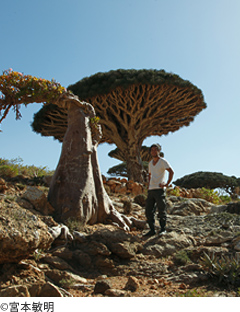
Ayami Sasaki
Right after graduating from the Department of Moving Images and Performing Arts, Tama Art University, Sasaki joined the theatre company “koyubichi” as a founding member. She has continued to work for the company even after it was renamed as “faifai.” She mainly works on stage design and sometimes works as faifai’s producer. For this program, she works on the spatial design in collaboration with the dancer Masako Yasumoto, the musician Oorutaichi and the plant hunter Seijun Nishihata.
http://faifai.tv/
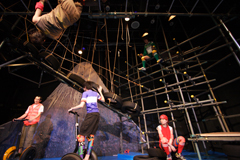
Feb 14 (Tue) 16:00–20:00, 16 (Fri) – 18 (Sat) 14:00–20:00
In front of KANAGAWA ARTS THEATRE
*Exhibition (admission free without Pass, in co-direction with Performing Arts Meeting in Yokohama 2012 Secretariat)
See also: Performing Arts AIR Meeting@TPAM
Kyohei Sakaguchi
An architect, writer, painter and the Prime Minister of the New Government. Entertaining fundamental doubt as to contemporary architecture in his architecture school days, he rummaged around the city, interviewed people living on the street, and lived on the riverbank of Tamagawa River himself. In 2011, shortly after the nuclear plant accident caused by the Great East Japan Earthquake, he moved from Tokyo to Kumamoto, where he established his new base Zero Center and the New Government.
As part of his “new government’s” upbeat territorial expansion plan, Kyohei Sakaguchi has just launched “Zero Public,” a new project that will seek to make public and share abandoned lands, houses, and farms across the country. He has built what he calls mobile houses, taking advantage of the Japanese law, which stipulates that a structure with wheels will not be deemed as a residential housing. This legal loophole makes it possible for him to create a “home” and place it anywhere he pleases. His philosophy holds that lands and houses should not be privately owned. His project explores ways in which one could share the “fruits of the city” with others, instead of monopolizing them. His work poses a radical question as to how one can live better and more creative life with other people in this day and age.
http://www.0yenhouse.com/
http://www.zero-public.com/
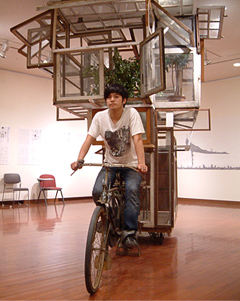
Feb 16 (Thu) 16:30 KANAGAWA ARTS THEATRE, Middle Studio
Sangatsu × Rhizomatiks
In 2011, the band Sangatsu launched a new project “Catch&Throw” to “grow sounds” through collective processes, where “tunes” that are played based on their incomplete “scores” are presented. In this program, they perform in collaboration with Rhizomatiks, an enterprise/collective that has advanced technical and expressive skills and extensively works on diverse media from the Web to interactive spatial design.
http://sangatsu.com/
http://rhizomatiks.com/
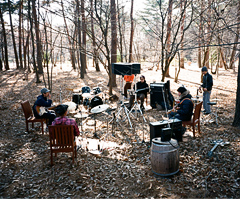
Feb 18 (Sat) 15:00
KANAGAWA ARTS THEATRE, Atrium
(admission free without Pass)
Masako Yasumoto
She had drifted and danced across Asia and Africa, and has still been cultivating her “wild sensation” since entering the world of contemporary dance. Drawing attentions also in the major scene by appearing in and choreographing for concerts, music videos, films and television, she has been developing unique genre-crossing activities. For this program, she creates a collaborative performance with Seijun Nishihata’s plants.
http://yasumotomasako.net/
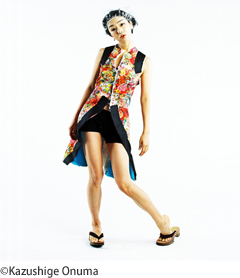
Oorutaichi
Oorutaichi began his career as a musician in 1999, inspired by artists such as The Residents, The Doors and Aphex Twin and establishing a style that involves improvisational essence. His free-wheeling melodic talent which had been developing in his unconsciousness and his improvisational singing in a language of his own drew wide attention. He has been active abroad as well: more than 30 stages in the U.S. and Europe as well as a performance at the Biennale of Sydney. For this program, he creates a collaborative performance with Masako Yasumoto.
http://www.okimirecords.com/
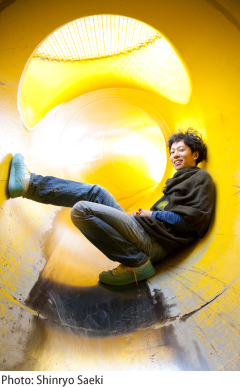
Yukako Ogura Direction
(Director, AI.HALL [Itami Culture Foundation])
An attempt to find a vision of the future of performing arts: confrontation with one’s own body and strong awakening to the existence of Others outside of the theater, i.e., the world. Not the deaths and sorrows of thousands but the thought of each individual is to be depicted with a certain kind of enthusiasm and cool-headedness. I would like to introduce two solo pieces by dancers that have long kept sincere attitude toward performance and a piece by an emerging director whose steady future work is expected. The actual number of the bodies on stage would be small, but they indicate something vast.
Feb 16 (Thu) 18:30 KANAGAWA ARTS THEATRE, Large Studio
Un Yamada ‘DICTEE’
“May I write words more naked than flesh, stronger than bone, more resilient than sinew, sensitive than nerve.” A solo dance piece inspired by the autobiographical text by the Korean-American female artist Theresa Hak Kyung Cha, which involves diverse subjects including multiculturalism, multiple languages, women and the history of the world.
http://yamadaun.jp/
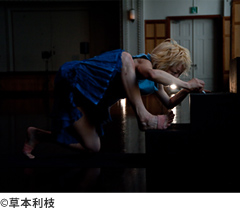
Feb 17 (Fri) 19:30 KANAGAWA ARTS THEATRE, Large Studio
Yujiro Sagami ‘about angels’
Sagami is a director who works parallel in both cinema and theatre and structures the body and drama with an interactive approach. His “DRAMATHOLOGY” presented and well-received in Festival/Tokyo 10 was created through collaboration with people older than 70. He aims at the next stage in this new creation.
http://www.sagami-endo.com/
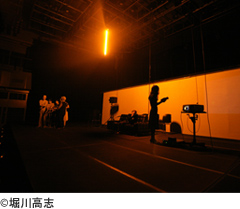
Feb 17 (Fri) 20:15 KANAGAWA ARTS THEATRE, Middle Studio
Naoka Uemura ‘Fulu-oto’
Uemura has been working on collaborations and sessions with artists of various genres as well as workshops with people from diverse backgrounds. These activities for “discovery and adventure of the body” are concentrated and expressed in her solo dance. Based on improvisation, she delicately and intensely articulates time and space.
http://www.naoka.jp/
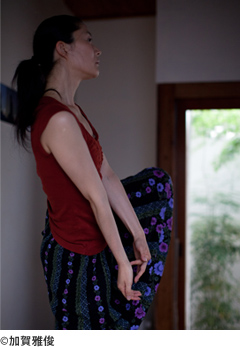
Katsuhiro Ohira Direction
(Director, ST Spot)
ST Spot has been exploring possibility of physical expression on stage and trying to materialize it. What the artists try to connect through creating events on the stage are structured on the rhythms. These three artists/groups have very different attitudes toward and distances from society, but they all work beyond categories such as “theatre,” “dance” or “music” and provoke audience.
Feb 17 (Fri) 16:30, 18 (Sat) 16:30 Yokohama Red Brick Warehouse Number 1 3F Hall
mum & gypsy ‘The World to Throw Salt on’
Is it really “daily life,” or is it a part of “memory” that everyone has? While the parts of the stories that they assemble are always fragments and are supposed to have nothing to do with continuous “daily life,” they create interactions of images and new space in the audience through making use of cinematic and musical structures. (performed in Japanese, subtitled in English)
http://mum-gypsy.com/
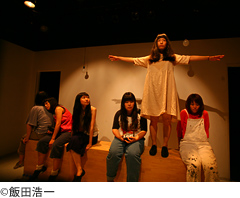
Zan Yamashita ‘Yokohama Stay’
The choreographer/director Zan Yamashita does not call for emotions or techniques but develops unique methodologies and structures from day-to-day actions and thoughts. Words and dance compete and coexist in this piece, and the reality of the city of Yokohama is revealed. In this showcase, he presents the English version in collaboration with Vincent Yong (dancer) that was premiered in Singapore last year. (subtitled in Japanese)
http://www.zanyamashita.com/
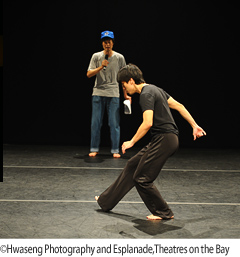
Feb 19 (Sun) 14:15 *Part 1/19:00 *Part 2 Yokohama Red Brick Warehouse Number 1 3F Hall
*The contents of the first performance and the second are different.
Masato Suzuki × Megumi Kamimura ‘The Well-Tempered Clavier’
Masato Suzuki is an excellent keyboard player who plays baroque and contemporary music proposing new ways of “showing” music. The choreographer/dancer Megumi Kamimura has constantly been exploring the boundaries of dance. They try to create a new physical experience of music with the sound of a harpsichord and contemporary dance, working on J.S. Bach’s “Well-Tempered Clavier.”
http://eugenes.cocolog-nifty.com/
http://www.kamimuramegumi.info/
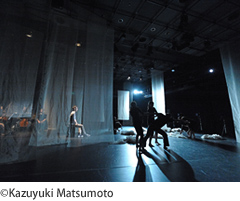
Masashi Nomura Direction
(Producer, Komaba Agora Theater)
What is the power of words? What is the power of music? What does it mean to share time and space? What is indispensable for performing arts to be...? I would like to reflect once again on these simple questions regarding performing arts, exploring what poetry, music and theatre have in common. I hope that it will be some kind of happening that could be called “time” or “gathering,” generated from a focus on what “performance” is, in contrast to the current mode of performing arts, which tend to be defined as a unit by an artist's name and a title.
Feb 19 (Sun) 16:00/18:00 KANAGAWA ARTS THEATRE, Middle Studio
Shuta Hasunuma × Ryouta Yamada (TOLTA) ‘Time’
Shuta Hasunuma has been exploring new relationships between the space in which music is played, the gestures of musicians, and the visual and sonic experience through live performances. Ryouta Yamada has been exploring diverse forms of poetic language beyond publication and reading. This is an attempt to reconsider performing arts from the viewpoints of the two artists, whose activities are free from the established ideas in the genres, namely “music” and “poetry,” which involve both media reproduction and live performance.
http://www.shutahasunuma.com/
http://tolta.web.fc2.com/
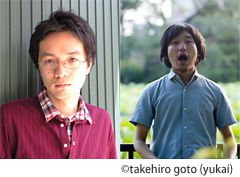
Performing Arts Meeting in Yokohama 2012 Secretariat Direction
We held “TPAMiY Summer Session” focusing on “after 3/11” in the summer of 2011. Its opening session, which was entitled “I Think What I’m Doing is Theatre,” involved Ryuta Ushiro from Chim↑Pom and Kyohei Sakaguchi. We would like to present video works that Chim↑Pom created for their exhibition “REAL TIMES” (May 2011), of which themes were the accident of Fukushima Daiichi Nuclear Power Plant and the Great East Japan Earthquake, and to introduce Kyohei Sakaguchi’s work in co-direction with Akane Nakamura.
Feb 16 (Thu) – 19 (Sun) 12:00–19:00
BankART Mini
*Exhibition (admission free without Pass)
Chim↑Pom
A Japanese art collective launched in 2005 by Ellie, Ryuta Ushiro, Yasutaka Hayashi, Toshinori Mizuno, Masataka Okada and Motomu Inaoka. With their works that involve such themes as “life and death” and intervene with all their strength in the contemporary society delivering strong social messages, they have drawn international attentions, participated in international exhibitions such as the Sao Paulo Art Biennial and were selected as the Japan delegate for “Asia Art Award” that was held in 2010. In March 2010, their first anthology “Chim↑Pom” was published by Kawade Shobo Shinsha.
http://chimpom.jp/
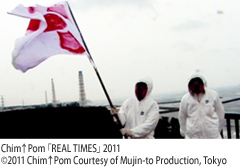
Dates and venue(s) TBA *Exhibition and talk planned
(in co-direction with Akane Nakamura)
Kyohei Sakaguchi
*See Akane Nakamura Direction.